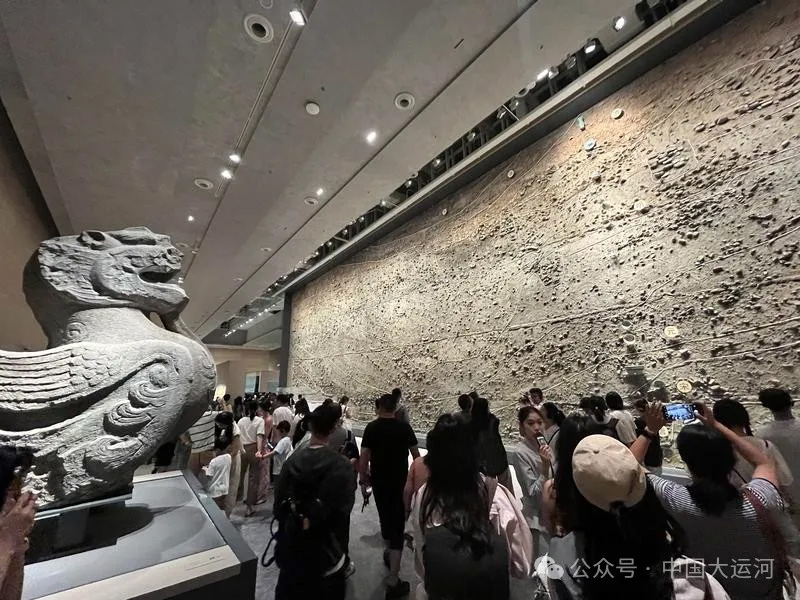Why China · Carrying Through the Ages | How Can One Grand Canal Bear Half of Chinese History?
Jun 29, 2024 | Source: mp.weixin.qq.com


It is a wise crystallization of harmonious coexistence between man and nature. Within its waterways lie the secrets of prosperity and a long-standing cultural heritage... It is the 2,500-year-old Grand Canal of China.
In 2024, it marks the tenth anniversary of the successful application for World Heritage status for the Chinese Grand Canal. On June 22nd, the online themed promotional event "Why China: Carrying Through the Ages" was launched in Yangzhou, Jiangsu Province, jointly organized by the Central Cyberspace Administration of China, the National Heritage Administration of China, People's Daily, and the Jiangsu Provincial Internet Information Office. From the 23rd to the 28th, the event visited various canal cities including Yangzhou, Huaian, Suqian, Xuzhou, Zhenjiang, Changzhou, Wuxi, and Suzhou, exploring the "past legends" and "present stories" of the Grand Canal and seeking the cultural code of "Why China."
Where did the Chinese Grand Canal come from? "Wu built Han, connecting the Yangtze and Huai Rivers." 2,500 years ago, King Fuchai of Wu dug the Han Canal to connect the Yangtze and Huai Rivers for his northern conquest. This marked the beginning of the Grand Canal. The Han Canal thus became the starting point for two "canal capitals": Yangzhou and Huaian.
Today, the Yangzhou Chinese Grand Canal Museum has been open for three years, and this "encyclopedia of the Grand Canal" has become a popular attraction. The Huaian Chinese Grain Transport Museum also tells the history of Huaian as the location of the "Governor of Grain Transport" and "Governor of River Courses."
Every archaeological discovery brings us closer to history. In 2024, the Sui Emperor Yangguang's Tomb Site Park and Huaian Ancient Mokou Site Museum, both built on the ruins of ancient sites, opened to the public, narrating the story of the origin of the Grand Canal.
In Yangzhou, a modest-sized Sui-Tang brick chamber tomb belongs to the excavator of the Sui-Tang Grand Canal—Emperor Yangguang of Sui. Yangzhou Museum Director Shu Jiaping, who once led the excavation of Emperor Yangguang's tomb, introduced that the most crucial evidence is the epitaph unearthed, inscribed with "Epitaph of the Late Emperor Yang of Sui," along with a series of high-grade burial objects such as a thirteen-ringed gold and jade belt, gold-plated bronze paving tiles, Empress Xiao's crown, chime bells and stone chimes, forming a complete chain of evidence. Although it is often said that the Sui Dynasty fell due to this canal, the opening of the Grand Canal, which connects the north and south, laid the foundation for the millennium-long prosperity of canal cities like Yangzhou.
The Huaian Ancient Mokou Site Museum displays four brick wall structures, including sluice dams and docks. This site is an ancient waterworks site from the Southern Song Dynasty and was a grain-weighing and dam-crossing dock used before the Song Dynasty. Some of the wall bricks are inscribed with "Huaian Prefecture" and other texts. Huaian City originated from Mokou and has a history of 2,500 years. Since the Tang Dynasty, Chu Prefecture (today's Huaian, Jiangsu) has been a port city connecting China and foreign countries, with foreigners residing and merchants gathering at Mokou.
In Jiangsu, there is another canal that has flowed to this day, hiding the cultural origins of "Why China" and "Why Jiangnan." Legend has it that Tai Bo fled to Wu and came to Meili in Wuxi, which was then the "barbarian land of Jing," bringing advanced culture from the Yellow River basin to Jiangnan and digging the first canal in Jiangnan—the Bo Du River. The two ends of the Bo Du River connect the Lihu Lake and Taihu Lake water systems, linking with nine tributaries on both sides to form a "one river and nine streams" layout. Its digging greatly improved the Taihu Lake basin's ability to resist droughts and floods, serving local agriculture and residents' lives. In 2018, the Meri Site was discovered in a deep pit along the Bo Du River. This is an important Shang and Zhou Dynasty site and a key geographical coordinate for unlocking the mystery of Tai Bo's flight to Wu.